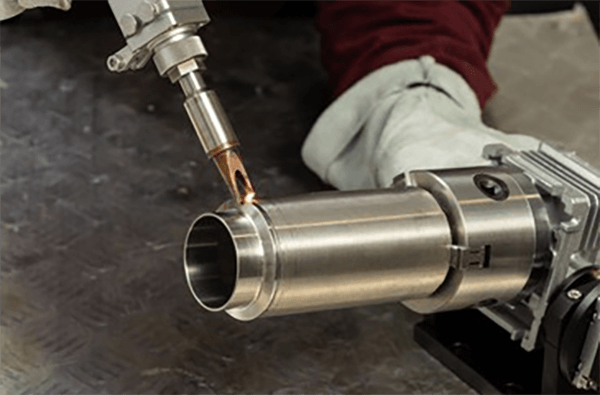
Producing the required exterior polish for a processed workpiece is critical.
- Drawing callouts communicate precise surface requirements for machined parts
- These callouts often use terms like "Ra," which stands for arithmetic mean deviation to quantify the surface roughness
- Interpreting finish callouts is necessary to guarantee parts satisfy functional criteria
- Specified roughness affects lubricant distribution, frictional performance, and durability
- Correctly reading the finish notation is necessary to attain the intended result
CNC Machining and Precision Engineering

Robotic-assisted machining defines a modern manufacturing practice through G-code driven routines the hardware sculpts intricate parts accurately.
- Programmed mills and lathes produce top-tier parts across material types
- Adaptable CNC processes fit the demands of aerospace, automotive, and medical markets
- G-code driven machining maintains reliable consistency across batches
From prototyping to mass production CNC machining plays a pivotal role in shaping modern manufacturing
Comprehending CNC Machine Specifications
Understanding equipment specifications can look intimidating initially
Nevertheless simple study and a stepwise method let you read technical specifications
Initiate by spotting principal specs like spindle speed, feed rate, positional accuracy, travel limits, controller
Every spec plays a role in determining machine performance.
In practice greater spindle speed often suits ductile substrates whereas higher feed supports productivity.
Perceiving such relations guides selection of appropriate CNC equipment
Make sure to read supplier manuals attentively.
Manufacturer docs typically supply key details and decode technical phrasing
CNC Machinery: An Exhaustive Guide
Automated CNC platforms are computer-commanded systems for precision manufacturing of multiple materials They process programmed G-code to regulate toolpaths and actuator behavior.
- Representative CNC types cover milling tools, turning machines, routers, plasma cutters
- Cutting methods suit steels, plastics, woods, and layered composites
- Additionally CNC gear supports fast prototyping and limited production for entrepreneurs and institutes
Understanding CNC Machinery
They present marriage of accurate mechanics and advanced control software Automated tools implement code to produce elementary parts and sophisticated assemblies Primary notion maps digital geometry to tangible fabricated pieces.
- Computer Numerical Control machining
- Programmed manufacturing process
It follows systematic positional moves controlled by code Shop technicians tune machining parameters, supervise production, and certify product accuracy.
Significance of Surface Finish in CNC
Meeting set surface quality in CNC work is significant It shapes both functional outcomes and outward appearance Substrate properties, machining variables, and post-process methods shape surface outcome.
Refined surfaces boost longevity; rough surfaces can diminish functional performance CNC systems provide diverse tooling and strategies to reach required finishes.
- By using distinct cutter geometries |diamond tooling|cutting speeds to achieve a desired surface finish
- Secondary operations like sanding, grinding, or polishing boost finish
Understanding the relationship between machining parameters and surface finish is essential for achieving optimal results in CNC machining operations.
CNC Machine Basics: From Operation to Applications
A precise fabrication technique, it applies computer-controlled machines to produce parts from assorted materials They run numerical instructions to manufacture complex shapes consistently Comprehending toolpaths, G-code, and tooling strategies supports effective machining
Fields benefiting from CNC include aerospace, automotive, industrial manufacturing, and electronics From turbine components to precision mold cores, CNC supports manufacture of complex parts
How to Specify Surface Finish for CNC Parts
Exact finish callout is important for CNC component manufacturing It verifies compliance with intended functional and aesthetic goals Finish specifications are often expressed via the Ra roughness standard Given in microns or thousandths of an inch, the figure measures average surface peaks and valleys.
Consider needed smoothness and the part’s application to determine finish requirements

Generally fine finishes benefit components requiring precision alignment and tolerance
Coarse finishes can benefit components where traction or friction are functional
Utilize a clear and concise callout in your engineering drawings to communicate the desired surface finish Specify the Ra metric and note any secondary treatments or special machining steps.
Consider that thorough finish callouts underpin quality manufacturing
Classification of CNC Machines and Uses
The world of CNC machining is vast and diverse with a wide array of machines designed to tackle various types of tasks They leverage CAD/CAM designs to instruct cutters for accurate and efficient fabrication.
- Drilling units excel at producing holes and axial features in parts
- Profiling routers cut complex outlines usually in softer materials
- Plasma machines slice thick steel and ferrous metals rapidly using plasma arcs
Choosing the right CNC depends on production goals material type and required accuracy Specialized CNC abilities fulfill industry requirements across sectors from transport to healthcare.
Attaining Superior Surface Quality via CNC
Attaining top-quality surfaces is critical in fabrication and CNC techniques facilitate that achievement Through careful tuning of feeds speeds and tool profiles operators manage chip formation and surface generation Also advanced insert materials and suitable coolant practices support improved finishes Deliberate machining strategies and exact setups enable production of components with excellent texture.
Achieving Surface Finish in CNC Programming
Mastering surface finish during CNC programming is crucial for achieving desired quality outcomes Parametric choices for feed, speed, and tool shape govern surface smoothness and defects Careful selection of these parameters in conjunction with proper lubrication and coolant management can yield a smooth and flawless surface finish.
- Additionally routine tool cnc machine definition checks and upkeep maintain consistent finish quality Plus regular inspection and maintenance of tools copyright finishing standards Moreover scheduled tool maintenance and inspection preserve surface performance
- For better finishes evaluate substrate, roughness goal, and functional context
- Path simulation offers insights to adjust cutting settings and reduce defects
- Continuous tool maintenance and oversight preserve high finish consistency
